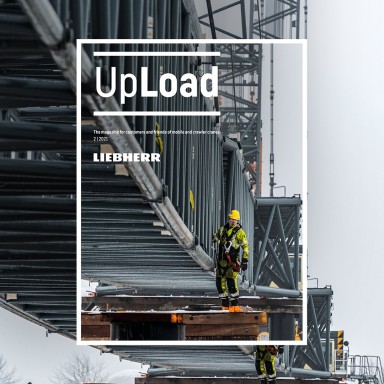
8 minutes | magazine 02/2021
From accident-damaged crane to jewel
From large to small, old to new, on wheels or crawlers – the daily bread of our colleagues in the Repair Department is the refurbishment of used cranes.
Every crane has a story
Every crane is different and has its own story. And the refurbishment is also an individual affair – the buyer decides which work is carried out. Depending on what the customer wants, our professionals can carry out repair, installation, polishing and modernisation work on the cranes.
This is where cranes are revamped
At our plant in Ehingen, even the most complicated cases are brought to a highly polished conclusion. Around 60 personnel take care of repair work at the manufacturing plant. These are people with lots of experience, technical expertise and unrestricted access to every crane component as well as all the documentation and drawings. Furthermore, the same equipment, machining centres and specialist tools used for crane production are used for the repair work. We followed an accident-damaged LTM 1130-5.1 crane, which was written off by the insurance company, during its refurbishment to give you a look behind the scenes. So how is the refurbishment work carried out? What are the procedures and how do the personnel approach the job? After operating for around 2 years, the 130 tonne crane built in 2018 came off the road and rolled over. The entire crane suffered major damage. After a general refurbishment for Korean crane contractor Muhan, the LTM 1130-5.1 looks like a new crane, performs just as well and features the very latest technology!
Only professionals can return accidentdamaged cranes to the same quality and technology level as a new crane.
It even delight our experts: “Major projects are really exciting”, says Stefan Kneissle, Manager of the Repair Department. “When we get a crane which is a total write-off and we refurbish it so that it looks like new and, of course, also features top quality and technology, it gives us all a real buzz.”
Easy process
Everybody would prefer to avoid an accident, but sometimes they just happen anyway – whatever the cause. To provide you with the best possible support in this situation, we can take back the crane – either with or without you giving us permission to deal with your insurers. After all, we all know that dealing with insurance companies can be very complex and time-consuming. That is why we take care of it, leaving you to concentrate on your core business, crane contracting.
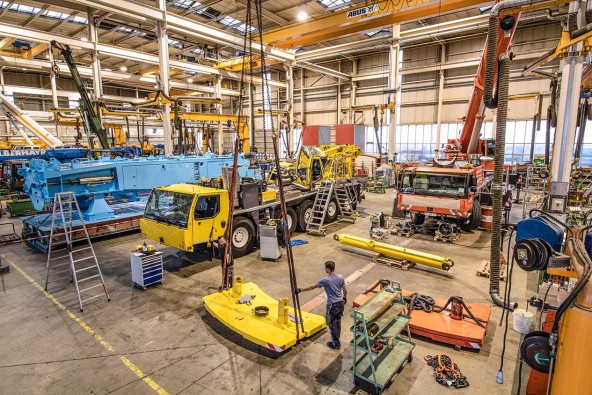
Crane dismantling
The badly damaged LTM 1130-5.1 was transported to Ehingen on a low loader. In the repair shop, the personnel dismantled the crane, documenting and assessing the damage.
For example, the luffing cylinder was so badly damaged that it had to be completely replaced. The ballast base plate, on the other hand, was intact and could be reused according to the report.
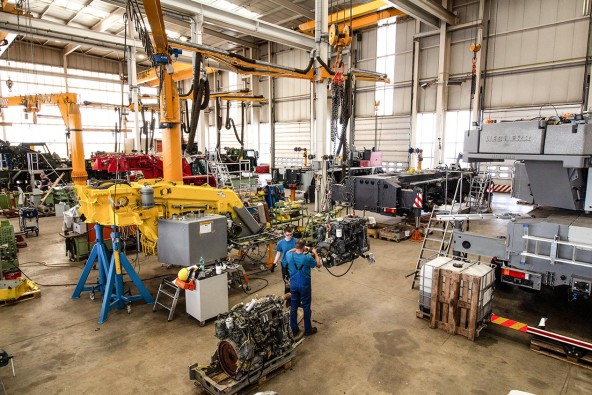
Repair and replace
The specialists dismantled the entire slewing platform. The roller turning connection and the slewing gear were removed, washed and returned to the manufacturer for assessment. The refurbished slewing gear was then re-installed whilst the roller turning connection was replaced.
The superstructure engine was broken and had to be replaced. The personnel dismantled the entire drive train, disposed of damaged parts correctly and installed the new engine. That included function tests and inspection work.
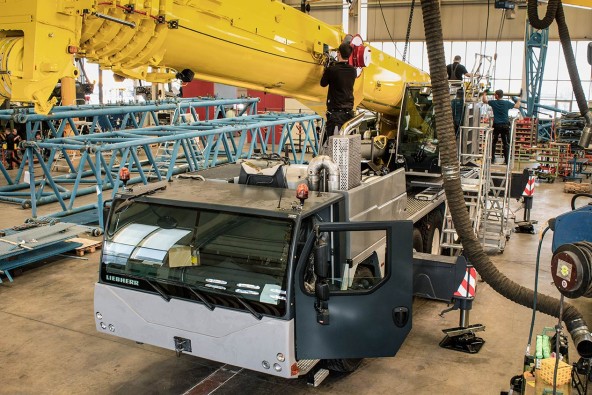
Assembly after refurbishment
The refurbishment of the crane has reached its final phase. The repair specialists have carefully and painstakingly removed the crushed crane cab to retain the main cable looms for connecting the new cab.
Every single telescope section and the pivot section on the dismantled boom have been inspected in full for signs of cracking. The personnel tested the telescoping cylinder, which had been repaired by the manufacturer, on the press test bench after it had been assembled and then conducted a function test. Once the boom had been assembled, it also underwent tests on the test bench.
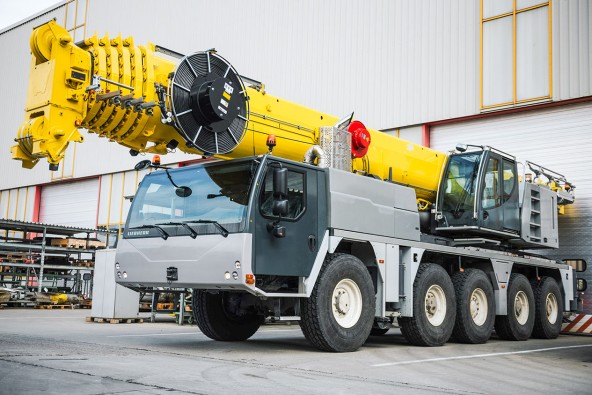
Finished!
The refurbished 130 tonne crane successfully completed its first test drive. After the braking test, the personnel set up the LTM 1130-5.1 on the test yard and completed the necessary function tests.
For example, they inspected the full length of the hoist rope and coiled it up under tension. The crane and all its accessories, such as ballast and the folding jib, were then prepared for the paintshop.
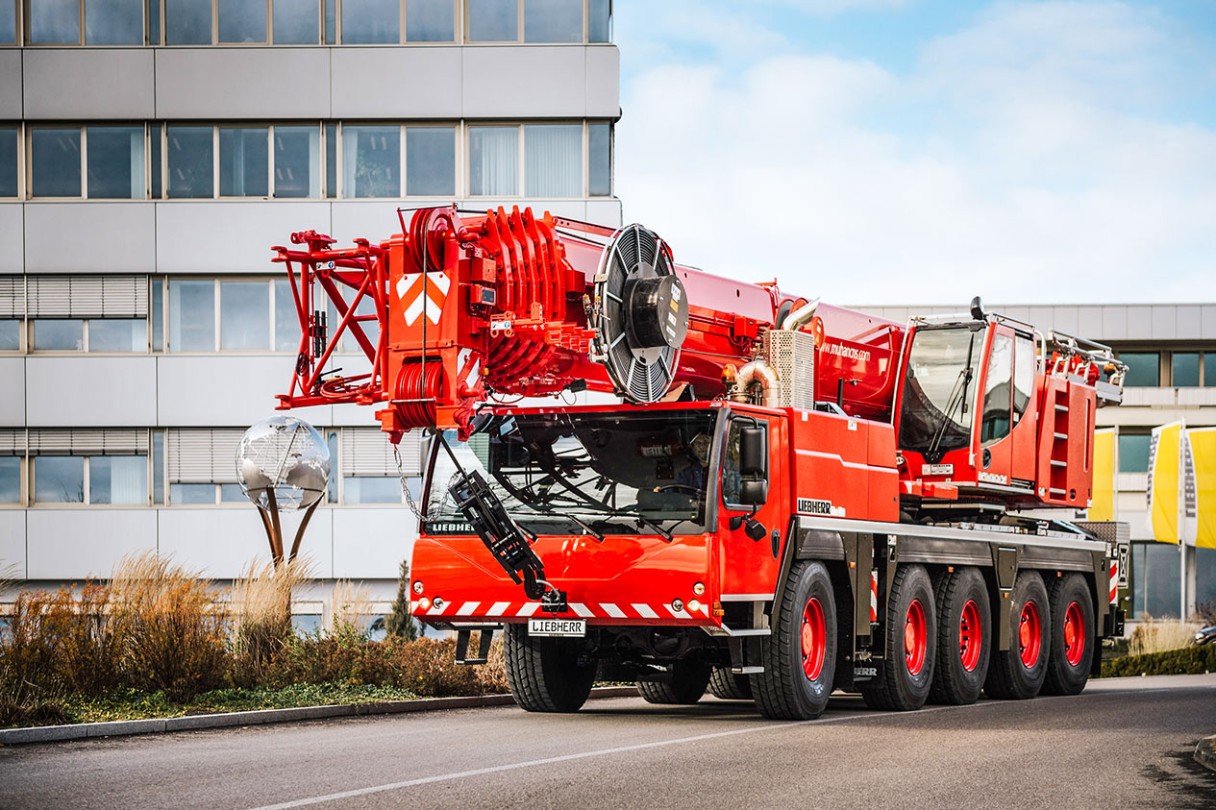
The refurbished, resprayed used crane en route to its new owner.

Stefan Kneissle - Manager of the Repair Department
3 questions to Stefan Kneissle
What is the procedure for the general refurbishment of an accident-damaged crane?
Stefan Kneissle: First of all, we make a detailed record of the damage. In other words, the complete crane is inspected for damage. This also includes dismantling the crane and taking its components apart. We remove some of them to return them to the suppliers. For example, the workforce at Liebherr-Ettlingen GmbH are experts at dismantling and inspecting the engine, whilst the specialists at the Liebherr plant in Biberach take care of the roller turning connection. Depending on what we find, a decision is made as to whether the components are repaired or replaced in full. During this, our staff check every individual part on the crane and start the refurbishment work from the very beginning. Every metal plate and every pipe, every screw connection and cable is cleaned, refurbished or replaced. This means that every single part of the crane is inspected. At the same time, we carry out servicing work such as replacing oil and filters and conduct all the required function tests. This also includes test drives and the acceptance procedure in the test yard. Finally, we hand over a fully functional, powerful crane with the familiar high Liebherr quality to the Shipment Department for delivery to the customer.
Why does Liebherr refurbish cranes which have been written off and what do you think is particularly important in this process?
Stefan Kneissle: A Liebherr crane is still a Liebherr crane, even if it has been badly damaged. It is a quality product and still has a residual value, particularly if it is relatively new. Our aim is to bring the crane back to life. When we, the manufacturer, refurbish a Liebherr crane, we can be certain that the crane will continue to meet our familiar high quality standards and our internal factory standards.
We attach great value to safety when we refurbish accident-damaged cranes. At the same time, we ensure that we reuse as many parts as possible. For example, intact electrical and pneumatic systems or even individual components can be removed from a damaged driver’s cab and installed in a new driver’s cab. That saves resources. We clean damaged components and dispose of them for recycling.
Which refurbished used crane is the one that really sticks in your memory?
Stefan Kneissle: That was an LTM 1800 which we repaired in 1989. It was an 8-axle crane and the largest in the Liebherr product portfolio at the time. It took us almost three-quarters of the year to complete. After an operating error, the crane collapsed and was badly damaged. We had to dismantle it down to its chassis. We then gradually reassembled it and returned it to full working order. I particularly remember it because I travelled with it on a 2-week trip to take it to Spain and hand it over to our customer Usabiaga. That crane is actually now in Panama where it sees regular action.
This article was published in the UpLoad magazine 02 | 2021.

